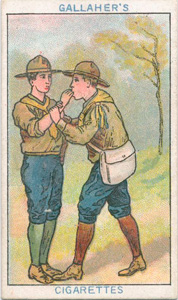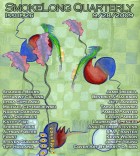What is it about (short) short fiction that first drew you to it? What about it continues to bring you back?
I had long admired the very short stories of Kafka, Borges, Hempel, others, before I gave the idea of length any real thought. Then, after a story of mine, “The Bridge,” was included in Sudden Fiction, one of the editors said they were doing a collection of even shorter stories and suggested that I submit one. So actually setting out to write a short short story was sort of an “assignment” for Flash Fiction. Afterwards, story ideas that seemed right for that length just never stopped coming. Another thing that draws me back is the PURE RHYTHM OF LANGUAGE—especially in the last sentence that should close a story down and also take it to a new place. Often a student will almost nail that final sentence, but the class realizes that the sentence needs three more syllables. Or six. We aren’t offering advice as to which words might be added, just our sense that the sound is not yet quite right.
“We are all in the middle of their drama,” you write at the end of “Office at Night.” That idea feels central, not only to this piece, but to a more generalized sense of writing. Yes? And how does one, in flash, achieve such an effect?
Every story should pull, even seduce the reader into a story that is already an unstable and intriguing situation. The short short story has to accomplish this more immediately than a longer story—and 250 or 500 words, say, can’t keep the reader there very long, though one always hopes for another visit. (And given today’s 24 hour news cycle and media/technology saturation, some readers think that shorter and shortest is a virtue.)
Here, Hopper inspires Painter, and maybe Painter inspires Reader to write a song, create a collage, and so on. I so love these kinds of connections. Who else, outside the world of writing, do you find yourself going to for inspiration? What of their work inspires you?
Musicians. Our access to music is one of technology’s greatest gifts. I can’t imagine living in the time before recordings were available. One might have heard Beethoven’s Piano Concerto #5, performed for the first time in Leipzig in 1811, and then once or twice more in a lifetime. It wasn’t recorded until sometime in the 20s—the 1920s!!!! Today, someone like the Polish composer Krzysztof Penderecki is commissioned to write a composition and almost immediately its performance is available on a CD or podcast. Virtuoso violinist Anna Sophie Mutter is eloquent when talking about Beethoven and her introduction to Pendereki’s work on NPR. She, too, instructs. Miles Davis said, “You have to play a long time to play like yourself.”
And artists. Artists teach us to see. I’ve always been amused and delighted by David Hockney’s swimming pools. The water’s surface has these odd swiggly lines that look so artificial. Yet, for the first time, I “saw” those lines this summer standing beside a friend’s pool—and looking into the water in a way I never had before. Of course, in a certain light, those lines were there in all the pools I’ve ever seen, but I didn’t really see them till this summer. It is one of the reasons why representational art will always be with us—teaching us to see. Also, I’ve always been drawn to small drawings—such as those found in the journals of Delacroix. One year, my husband and I were visiting Monet’s Giverny, but the real discovery was at the museum across the road that had mounted a show of Whistler’s tiny perfect watercolors.
Speaking of inspiration, one doesn’t have to go far to find flash writers who have been taught and inspired by you. I count myself as one of the fortunate ones who had the sincere joy of working with you for a semester. What do you think about when you think of all us, writing our stories, inspired by our work with you?
Thank you, thank you for those good words about my workshops. Teaching the short short workshop is one of my great pleasures, and I’m thrilled when students’ stories are accepted for publication. I had been assigning writing exercises in my regular story workshops (most of these exercises are collected in my co-authored textbook What If? Writing Exercises for Fiction Writers) in part persuaded by John Gardner’s The Art of Fiction. He maintained that when a writer “deals with some particular, small problem…the quality of the work approaches the professional.” When I began teaching the short short story, I soon discovered that this length lends itself to that early, small and perfect work. Students immediately began to publish their stories, and one graduate student, Brian Hinshaw, won the World’s Best Short Short Story Contest, begun by Jerome Stern at Florida State. Brian never received his award of a crate of oranges, so he found an old crate and made an orange crate collage. Another student, Kat Gonso, was a 2009 finalist. Ron Wallace, himself a winner of that contest, later wrote about Brian’s story, “The Custodian,” in an illuminating essay for the AWP Chronicle, in which he compares the short short story form to the prose poem using “The Colonel” by Carolyn Forche. In addition, so many students of the short short story form at Emerson and Vermont College of the Arts, like you, have gone on to edit or start magazines such as Quick Fiction, Fringe, Night Train, or small presses. Two Emerson students started Rose Metal press, which just published the Field Guide to Writing Flash Fiction. And of course, it is great fun when I recognize the exercise behind the story—such as all the one-sentence stories that you all have published. Or the “chain” story. My students have stayed in the ring.
I find myself, after reading “Office at Night,” left with “voluptuous curve” in my mind, and I see that curve even on the El, Hopper in his train, curving around this scene. Another reader, of course, might find an attachment to something else. What in the world seems to catch your attention these days? What, like that blue dress, cannot be ignored?
What I could not ignore in terms of this painting and its presentation was the museum’s description/interpretation—someone was not really seeing the dynamics in the painting, and so I wanted to correct that. I seem to recall that in one of the early drawings for “Office at Night” there was no piece of paper on the floor. That addition is crucial to the tension between the secretary and the man at the desk. The man with the red ear!!! But really—anything can catch my attention—even a cliche like “my entire life flashed before my eyes,” the subject of the story I’m working on now. Nothing can be ignored.



 The core workshop of SmokeLong Fitness is all in writing, so you can take part from anywhere at anytime. We are excited about creating a supportive, consistent and structured environment for flash writers to work on their craft in a community. We are thrilled and proud to say that our workshop participants have won, placed, or been listed in every major flash competition. Community works.
The core workshop of SmokeLong Fitness is all in writing, so you can take part from anywhere at anytime. We are excited about creating a supportive, consistent and structured environment for flash writers to work on their craft in a community. We are thrilled and proud to say that our workshop participants have won, placed, or been listed in every major flash competition. Community works.